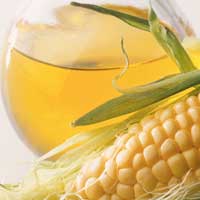 Is corn a vegetable, seed, or grain? I am not exactly sure. In her excellent text, Know Your Fats, Dr. Mary Enig (lipid chemist) tells us that whole corn is an herbaceous plant.1 In The Paleodiet, Dr. Loren Cordain places corn in the cereal grain category, and urges us to avoid the consumption of corn.2 Cordain is currently a professor of exercise science at Colorado State University and one of the world’s experts on paleolithic nutrition.
Is corn a vegetable, seed, or grain? I am not exactly sure. In her excellent text, Know Your Fats, Dr. Mary Enig (lipid chemist) tells us that whole corn is an herbaceous plant.1 In The Paleodiet, Dr. Loren Cordain places corn in the cereal grain category, and urges us to avoid the consumption of corn.2 Cordain is currently a professor of exercise science at Colorado State University and one of the world’s experts on paleolithic nutrition.
The fatty acid profile of corn absolutely places it into the seed or grain category. Nearly all vegetables have an omega-6 (n-6) to omega-3 (n-3) that is about 3:1 or better. The n-6 fatty acid found in vegetables, fruits, and seeds is known as linoleic acid, while alpha-linolenic acid is the n-3 fatty acid. So, when we see n-6:n-3 ratios for these foods, we are being referred to the linoleic acid to ALA ratio.
Our dietary n-6:n-3 goal should be 4:1 or better. Ratios above 4:1 promote inflammation.3 The n-6:n-3 ratio of corn ranges from about 25:1 to 60:1, which certainly removes it from the vegetable category. Only grains and seeds have such high ratios.
After reading the above, some will ask, “Does this mean that corn is bad?” And the answer is, “No and yes.” Consider that a serving of corn (1/2 cup) has only .5 grams of total fat, and .24 grams or more of n-6, AND, like other grains and seeds, corn has virtually no n-3 fatty acids. This represents a low-fat food and the n-6 level can be balanced by other n-3 foods (green vegetables, fish, n-3 eggs, etc.).
Corn becomes most troublesome when we eat corn oil. Consider that 1 tablespoon of corn oil contains 14 grams of fat, 8 grams of which is n-6 and only .1 gram n-3. If we wanted to take in 8 grams of n-6 from eating corn, we would need to consume up to 16 cups of corn. No one eats this much corn—save for, maybe, at a corn-eating contest, if there is such a thing.
The only creature that eats pounds of corn would be domestic cattle and other such animals and, then, we eat the meat from the animals. In short, cattle are eating far too much corn oil, which leads to an inappropriately high ratio of n-6:n-3 fatty acids, such that we eat “inflamed” meat. For this reason, Cordain and others urge us to eat grass-fed beef, chicken (eggs), and wild game. These animals eat green vegetation that has a 3:1 ratio or better.
The average American uses corn oil (safflower, sunflower, cottonseed oils are as bad as corn) for cooking, eats it in packaged food, and eats meat/chicken/eggs that ate corn oil. Americans are clearly “corn oiled.”
Recall that 4:1 or better is our dietary n-6:n-3 goal. The average American’s ratio can be as high as 30:1, and perhaps higher. Anything above 4:1 is thought to promote chronic inflammation and chronic disease,3 so it is not surprising that Americans are sick and suffer with chronic aches and pains. These very high n-6:n-3 ratios cannot be combated with drugs, chiropractic adjustments, or fish oil supplements. We need to eat less n-6 foods and, then, supplement with n-3 fatty acids from fish oil.
References
1. Enig Mg. Know Your Fats. Bethesda Press: Silver Spring (MD): Bethesda Press; 2000: p.115
2. Cordain L. The Paleodiet. Hoboken: John Wiley & Sons; 2002
3. Simopoulos AP. Omega-3 fatty acids in health and disease. Am J Clin Nutr 1999; 70(suppl):560S–9S
Dr. Seaman is the Clinical Chiropractic Consultant for Anabolic Laboratories, one of the first supplement manufacturers to service the chiropractic profession. He is on the postgraduate faculties of several chiropractic colleges, providing nutrition seminars that focus on the needs of the chiropractic patient. He is also a faculty member at Palmer College of Chiropractic Florida, where he teaches nutrition and subluxation theories. He can be reached by e-mail at [email protected].
